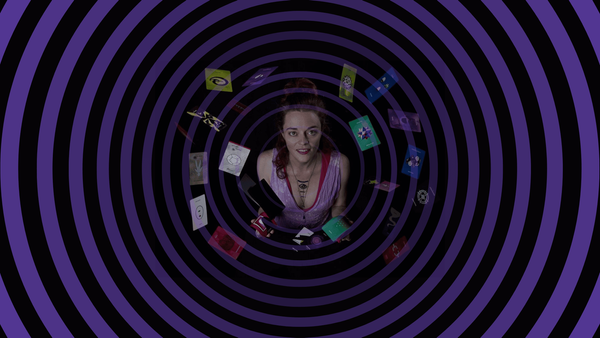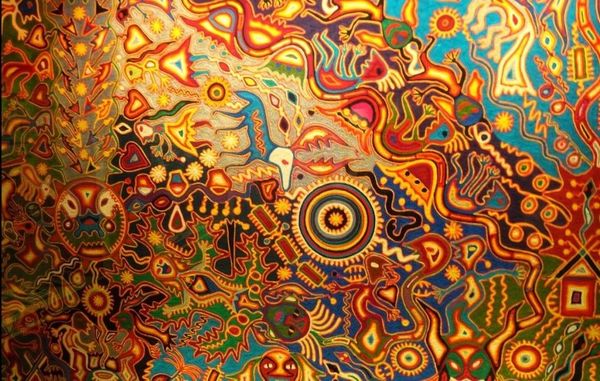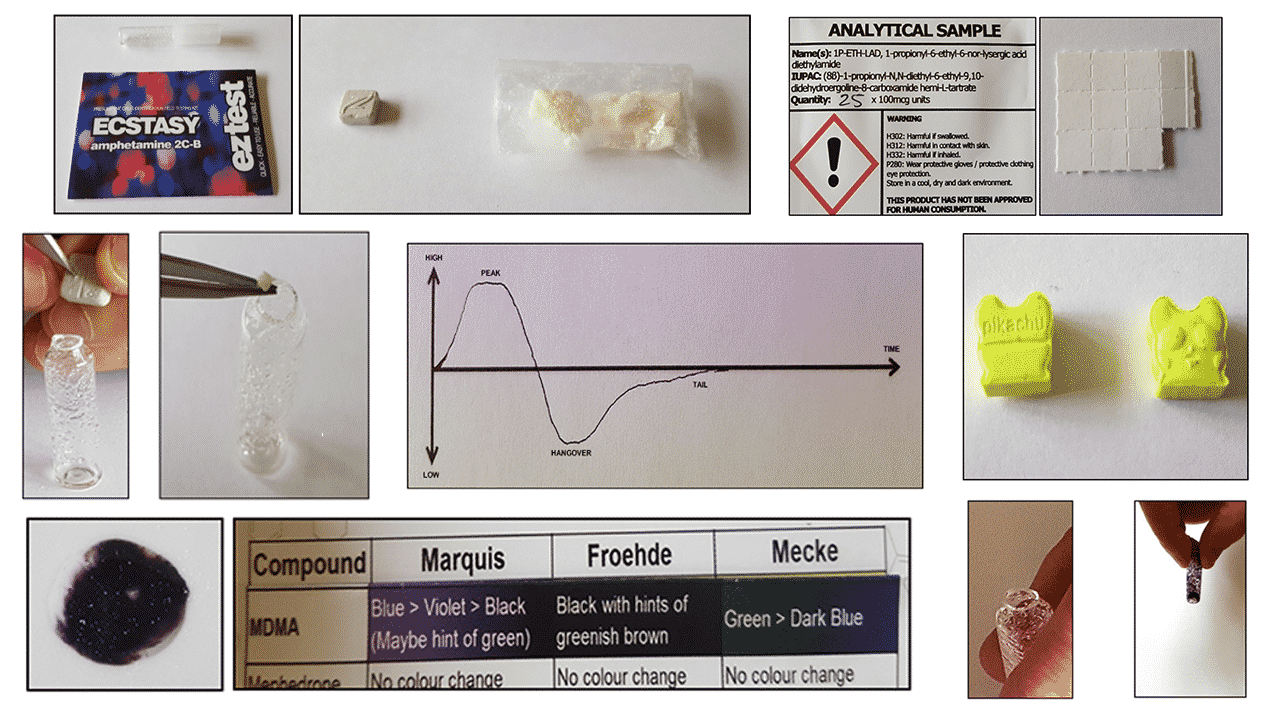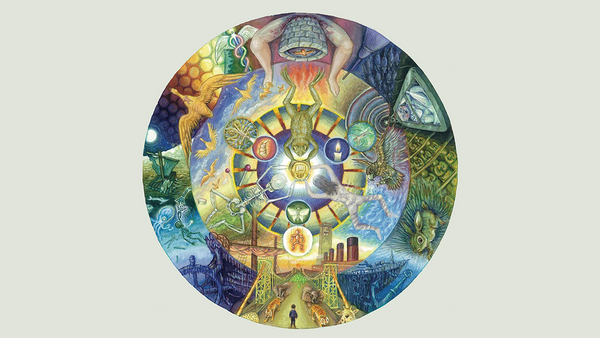Jon Waterlow • • 13 min read
10 Things I Wish I’d Known Before Drinking Ayahuasca
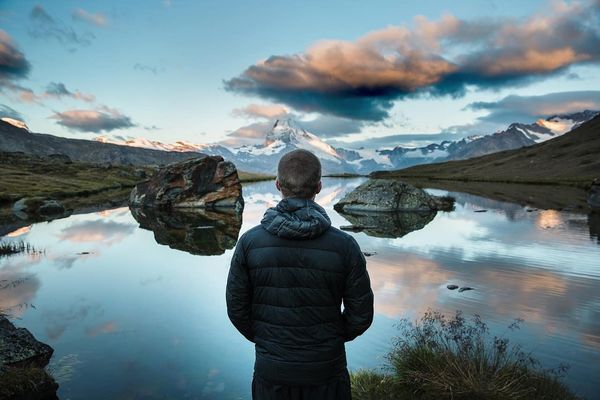
It seems like the whole world is talking about Ayahuasca these days. Once a mystery medicine sought out by intrepid Anthropologists and wayfaring authors who had to bribe locals and follow tip-offs to find a shaman willing to prepare the brew, it’s now sold in plastic Coke bottles by hustlers on the streets of Peru and Colombia. Those original Western seekers believed Ayahuasca could give you telepathic abilities, but you don’t need any special foresight to realise that drinking a bottle of murky, theoretically psychedelic liquid sold to you by a stranger probably isn’t the smartest move you’ll ever make, especially if – as many stories recount – they then leave you alone for a few hours to have the ‘trip’ and then toss you out on the street, regardless of the state you’re in.
But we can’t just blame the street-hawkers; they wouldn’t exist if there wasn’t a demand. Ayahuasca tourism is a growing trend, with increasing numbers of people – inspired by trite media and movie coverage of this sacred plant medicine – travelling to South America to get ‘high’ rather than to get healed; there’s even stories of people taking Ayahuasca as a party drug, although I’m not sure what kind of party involves projectile vomiting.
But despite its growing prominence, even if you do your research and find a responsible place to work with this profoundly (inner) eye-opening medicine, the general picture of what drinking Ayahuasca is like – especially the difficult process of integration afterwards, which can last for months – is often not only limited, but positively misleading.
About 18 months ago I made the decision to travel to Peru and drink Ayahuasca. I’ve suffered with depression for most of my life, even attempting suicide on a couple of occasions, so when I began to hear tales of people being cured of addiction, depression, or anxiety issues after a single ceremony (not just improved, helped, or made to feel a little better – cured), I knew I had to find out more.
I did my research; I listened to dozens of personal accounts; I read and watched interviews with the shaman I decided to work with; and I read half a dozen books on Ayahuasca. Surely that made me prepared, right?
Wrong.
And not just because it’s impossible to be truly prepared for a psychedelic which hauls you through the doors of perception and unceremoniously throws your sense of self and reality off the edge of the world. No – there ended up being quite a list of things I wish I’d known before I set out to meet Mother Ayahuasca. Some were pleasant revelations, but others were more serious. So I’ve gathered them together here to help people be at least a little more prepared than I was. Like a bucket of water over the head, it’s still going to make you jump, but hopefully you’ll be a little more ready for it.
#1. Everything You Expect of Ayahuasca Will Be Wrong
This is a tough one to get your head around, because expecting the unexpected is still an expectation. But just as hearing the plot of a great movie is a far cry from seeing, experiencing and feeling it, the same applies, on an exponentially greater scale, to the difference between hearing other people’s accounts and drinking Ayahuasca yourself. Especially if you’ve never taken a psychedelic before, conventional language is about as close to the experience as a child’s drawing of a snowflake is to being in the middle of a blizzard. I’m not trying to make things sound scary; the point is only that it’s important to recognise that you inevitably do have expectations and that you must be willing to let them go. That being said…
#2. Letting Go May Be The Biggest Challenge
In my first ceremony I found myself facing a huge demonic wall covered in gnashing teeth. I knew that the insights I needed were on the other side of the wall, but clearly my mind wasn’t keen on letting me past its toothy defences.
I was trapped in a nightmarish series of abstract images pulsing in lurid neon; I was completely overwhelmed by the visuals and the sensations. But the real problem was my desperate attempt to press ‘pause’ on the experience and try to understand it then and there. What did that mean? No, wait, can I just look back at that again? What does this mean? I’d heard so many people tell stories of visions which seemed to make perfect narrative sense that I was sure things were somehow going to unfold in front of me in a linear narrative. But that wasn’t happening, and I couldn’t get past the wall and its hellish teeth. Panic rose higher and higher until I let out a mental howl of desperation: ‘Please, please, please help me!’
Letting the desperation out left me in a moment of calm, and only in that space was I able to take a breath and begin to uncurl my fingers from the compulsion to take control of the situation and admit to myself that I was terrified of letting go and not being able to calmly analyse what was going on.
I wasn’t the only one. The next day, just about everyone else in the group told the same kind of story: we all got our asses kicked because we tried to control the experience and make sense of it as it happened. We were stuck in our heads, trying to control the flow of the river rather than floating wherever it took us. We knew we were supposed to let go, but we didn’t really understand what that meant until we failed to do it. It’s a bit like sitting on a moving train, looking out of the window. If you’re looking up ahead, you can see the wider picture, but if you turn side-on, trying to focus on things just as they pass by, it’s ungraspable; gone in a flash. With Ayahuasca, it’s about allowing things to come to you. So, be prepared to find out the hard way and try to recognise if you’re attempting to steer the experience.
#3. You Will Experience Meaningful Vomit
Ayahuasca gets messy. But although most people mention the vomiting, there’s quite a bit more to the experience than just nausea and discomfort. Some part of your mind tries to make sense of why you’re vomiting… And it’s not just a vague ‘let’s cleanse your insides’; it becomes woven into a meaningful story in your mind, like those moments between waking and dreaming when your brain turns the sound of your alarm into some part of the dream. For some people, this can end up being a full on redemption story: Mother Ayahuasca told one friend of mine that she’d been medicating with alcohol for years, so now she’d got to throw it all back up. This can be liberating in the end, but my own experience of choking into a plastic basin trying to cough up a chunk of my own personality that was holding me back in life was quite a long way from my idea of fun.
Read this: Ayahuasca: A Story of Death, Rebirth and Love
#4. The Ayahuasca Visions Don’t Make Sense Until Later
People always talk about the visions when they talk about Ayahuasca. Given how colourful, wild and revealing they can be, that’s no surprise. But by the time you hear them, a complicated process has already taken place and the person recounting the tale has had to do quite a bit of work.
The morning after each ceremony, my group and I stumbled around, glassy-eyed and almost mute, unable to express what had happened to us the night before. Things still seemed beyond words. Only later in the day did the images, moments and feelings even start coming together; in fact, the meaning came through the process of sharing them with each other. It was in the act of putting things into words or writing them in a journal that we began, to quote Alan Watts, ‘to eff the ineffable’. The story comes out in the tellings, and not without quite a bit of effort and frustration.
Part of the difficulty is simply that in the psychedelic space, completely contradictory things – thoughts, pictures, feelings – can peacefully coexist without logic or reasoning getting in the way. But when we try to describe them in conventional language, the cracks start to show and those moments of absolute emotional clarity become impossible to nail down. What we share afterwards is just a rough simulacrum of the actual experience – an approximation specifically shaped to tell to other people.
#5. … And you might not ‘see’ visions at all
Despite all the stories and often-beautiful artwork, not everyone gets visions. And ‘visions’ might not be the best word for what happens, anyway. You might not actually see anything at all, but instead perceive things in some subtly different way. So, while someone might tell you emphatically that they didn’t have any visual experience, they might go on to say, with fire burning in their eyes, that they had the experience of being eaten alive by a giant anaconda, finding themselves at the end of the universe, or experiencing the death of everyone they’ve ever loved. So what the hell does that mean?
In short, the experience doesn’t unspool in front of you like a movie; it’s more like a waking dream or a vivid reverie created in your imagination, but over which you have very little control.
#6. You won’t get what you want and you might not know what you need
I went to Peru with questions like: What should I do with my life? and What am I even good at? Ayahuasca gave me a firm slap in the face and said, ‘No, bitch, we need to deal with the fact you hate yourself first!’
I wasn’t entirely oblivious to this, but I thought I could skip to the endgame without going back to the beginning. I was trying to build on top of foundations that were rusted and collapsing, and Ayahuasca wasn’t going to let me be so foolish. We often don’t realise the source of the pain we feel; tracing back the convoluted route it takes through the psyche, back to the root, can seem impossible. We think we don’t know, but at a deeper level we do; Ayahuasca reveals and reconnects us with the source, but, to the conscious mind at least, this can come as quite a surprise.
#7. People who’re prepared to be vulnerable and address their issues are truly beautiful
Some of the most powerful moments when drinking Ayahuasca don’t happen in the ceremonies themselves; they happen in the times between, sharing stories, experiences, hopes and fears with the people around you. That kind of honesty and openness is all too rare in everyday life; sharing such intense experiences – baring our souls to each other – quickly turned us into a fellowship.
When I think of my time in the jungle, it’s not drinking the Ayahuasca that I dwell on, but being there with those courageously vulnerable people in an atmosphere where everything was aimed at healing and helping and valuing ourselves.
#8. It’s worth looking in the mirror to see who’s there
I’ve heard people talk about getting ‘stuck in the mirror’ when they’ve taken mind-altering substances, and they didn’t seem to look back on the experience too fondly. It was different for me.
After a trip to the bathroom mid-ceremony, I looked into the mirror and saw someone else there. I mean, it was me, but it was also someone separate – someone who spoke to me. He looked pretty nice. Friendly. Open. We spoke to each other and, for the first time in my life, I really felt like I was on my own side.
I was able to tell myself that I love myself, and in a way which actually felt real, rather than mouthing the words because some self-help book told me I should. I felt like I really reconnected with my heart. More importantly, since then I’ve kept the ability to have these conversations with myself – to be able to check in and ask with compassion, ‘Are you OK?’, and to answer honestly, instinctively, and to be able to feel that I’m on my own side, rather than my own worst enemy. For me, this is the only way I seem to truly connect with my emotional self, without getting tangled up in thoughts, fears and rationalisations.
So, this might not be for you, but it was such an important moment for me that I wouldn’t want you to miss the chance of having a similar experience.
#9. Most people back home who haven’t worked with Ayahuasca will treat you like a freak.
They might not moralise and remonstrate (although some will), but they’ll be disturbed at some level by your actions. This can feel pretty alienating, even hurtful, so it’s worth preparing for. It’s not necessarily even about the ‘drug-taking’: a distant reception from people back home is a side-effect of travel in general.
T.S. Eliot once wrote that, ‘And the end of all our exploring / Will be to arrive where we started / And know the place for the first time’, but, as Rolf Potts, author of Vagabonding, points out, ‘“knowing” your home for the first time means that you’ll feel a stranger in a place that should feel familiar’.
Coming back from a long journey to discover that nothing much has changed and people are unwilling or unable to get excited about your stories because they lie too far beyond the horizon of their own experience, as well as the mundanity of what they’ve been up to in your absence (familiar patterns that you may’ve been trying to break out of), mean that you can feel remarkably lonely on you return.
Drinking Ayahuasca is a journey in itself, and it’s one you can’t expect most people – even those closest to you – to understand. They might say ‘Wow’, or ‘That sounds crazy’, but their eyes will then either glaze over or search deeply into yours, looking for signs that you’re about to grab a knife and go totally off the cheeseboard. So we must remember, as Potts notes, that ‘travel should always be a privately motivated undertaking. Try as you might, you simply can’t make the social rewards of travel match up to the private discoveries’, and, therefore, ‘remember to keep your stories short and keep the best bits for yourself’.
Share what you want, of course, but don’t become disheartened when these intense, possibly life-changing experiences fall lifeless at the feet of your puzzled audience.
I also found that the more I told even the most profound, deeply affecting part of my Ayahuasca experience (where I’d been able to meet and embrace my inner child), the more I felt it diminish in intensity. By exposing it to the light, I was allowing it to fade a little each time. As recent research into memory shows, the more often you recall an event, the more you are only recalling the last time you told the story, rather than the events themselves – and given you’ll be describing some deep emotional experiences that lie far beyond words, this can severely limit and degrade those original experiences.
I also didn’t want to retell that moment without feeling the depth of the emotions it conjured up, but I also didn’t want to burst into tears and find that emotional place on demand whenever anyone asked me about my experiences. So, if you do want to share your stories, I suggest recording them in some form – written, spoken, filmed – soon after they happened, and then share the recording instead. You can also prepare some sound-bite answers like, ‘It was probably the most important thing I’ve done’. For most people, that’s about as much as they actually want to hear; you can always go into greater detail if someone truly wants to know more.
#10. Integration of Ayahuasca is much harder and much longer than you think.
This is the most important point of all. There’s so much stuff online which makes it sound like a cup of Ayahuasca is a magic potion that provides an instant transformation: a sudden clarity which resolves all emotional and mental difficulties. It doesn’t.
Just about everyone in the group I drank with has talked about how difficult they found it to understand and integrate what happened in Peru. For some, myself included, life seemed even more of a mess than before; in many ways we felt like we’d ‘done it wrong’ and promptly started beating ourselves up because we ‘couldn’t even drink Ayahuasca properly’. I still experienced depression at various levels of intensity and was still very confused and anxious about where my life was going – but now I’d also had a bunch of my core beliefs and ideas thrown into disarray by the medicine. Having your life, habits and values called into question is going to be massively destabilising, even if it ultimately leads to positive results.
This might sound obvious, but it’s not what any of us had expected. People usually speak about their Ayahuasca experiences while they’re still in the immediate afterglow and everything seems peacefully rosy. But it’s taking the experiences and insights back into everyday, ‘normal’ life which is the real challenge. You may enjoy a powerful clarity when you’re under the medicine, but to replicate that clarity and sense of ‘rightness’ without it, you need to make practical changes to your life outside the maloka. And change is a tricky thing: it takes time, it can be scary, and often it hurts.
Ayahuasca raises more questions than it answers; you’ll likely spend months and even years finding ways to answer those questions. Getting an Ayahuasca tattoo after your experience is not the same as taking the feelings and knowledge of the ceremonies away with you and making real and likely painful changes to your life.
The ceremony is the first step, but integration is the journey; the ceremony is merely the prologue of a much longer story. This is why people often talk about ‘working with’, rather than ‘taking’, Ayahuasca. It’s an active and ongoing process that requires effort from your side, too.
So, if you’re going to work with the brew, I wish you well on your travels and hope these pointers help you along the way. We can never be truly ‘ready’, but at least we can walk into the unknown with our eyes and hearts open.
But even if you disregard all of the above, then take these four words with you instead:
Be kind to yourself.
A Final Note on Safety
As we repeatedly stress on HighExistence, psychedelics must be approached with reverence and caution. We believe that in a loving context, certain psychedelics are powerful medicines with tremendous potential, but there are a number of physical and psychological safety concerns that one should consider before journeying with psychedelics. Please, please do plenty of research, and do not take psychedelics if you have reason to believe that they will not jibe with your personality or particular mental baggage (or if your family has a history of mental illness). The Essential Psychedelic Guide on Erowid is an exceptional free resource, and we recommend reading it, especially the section on ‘Psychedelic Safety,’ before ever dabbling in these substances. We also recommend reading our guide to psychedelic myths before deciding to try psychedelics. It’s also imperative that you buy a test kit if you aren’t absolutely certain that the substances you’ve procured are what you believe them to be. Take care, and be well.

